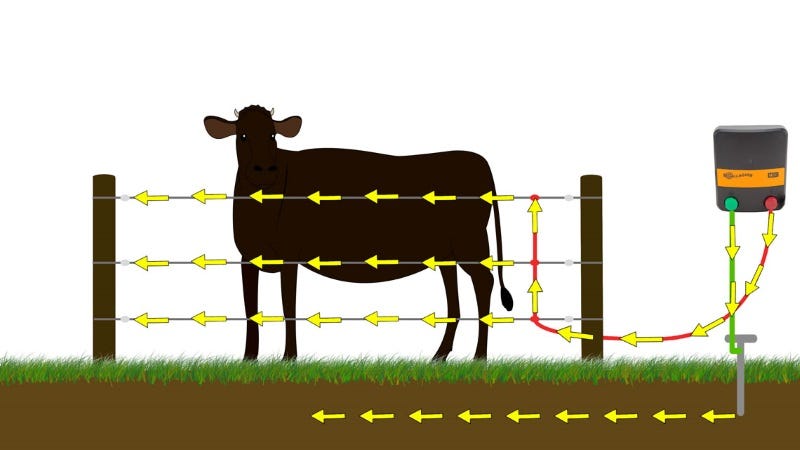How Do I Install An Electric Fence?

When looking to install an electric fence, you need to ask yourself three questions. 1.) Is your fence permanent or temporary? 2.) How big is the space you're fencing? 3.) What animals are you targeting? After you answer these... then the real work begins.
1.) Is your Fence Permanent or Temporary?
First things first, this is the best question to ask for a few reasons. Why? Permanent fences and temporary fences use different materials. If it's a permanent fence you're after, then you're going to opt for an installation that utilizes wire (aluminum, high tensile wire, or Gallagher's Turbo Rope).
You will need to use wire in a permanent electrical fencing application because it holds up better than (most) tape or rope, and is much more resistant to the weather it will be exposed to out on the range. You'll also want to opt for standard t-posts (for obvious reasons) rather than the "step-in" fiberglass options for temporary fences.
If you're looking to set up a temporary fencing enclosure, you'll want to opt for polytape or polywire when running your lines. Why? Because you can easily roll it up and transport it when you move camp or otherwise take down your installation.
With a temporary electric fence, you also have the option to use fiberglass "step-in" posts. So now that we know if it's permanent or temporary, and we have an idea of what wire to run--now we need to get more specific--i.e. are we trying to keep out bears or bunnies?
You can shop for everything you need for your temporary or permanent electric fencing online here.

2.) What Animals are you Targeting?
Are your animals trained to electrical fences? This may seem like an odd question, but if you think about it, it makes sense. If you're looking to fence an older horse who understands what a fence line means already, you can opt for XL aluminum wire because it's easier to work with and is a great conductor (but snaps more easily).
However, if you're trying to keep wildlife out of an area, (or a colt) that may NOT know what a fence line means, then opt for the high tensile option we have online here.
Why? Because it won't snap when that black bear hits the fence looking for your honey instead, high tensile wire will bend, and then deliver a shock that'll keep your comb safe.
If you're looking to fence smaller animals in (or out), you can opt for any of the poly options we have online (right here). The last piece in the electric fencing puzzle is what energizer is right for your set up.
3.) How Big is the Space you're Fencing?
When selecting an energizer (roughly), you can opt for 10K Ohms/mi. (ideal for under ¼ mile) on small acreage installations, or you can go with a resistance of 209 Ohms/mi for when you are fencing larger areas. The video below goes into more depth about selecting your energizer, check it out--
Another note: electric fences cost less than traditional barb wire fencing. Why? Well, an electric fence is lighter than barb wire because it relies on the ZAP of electricity to deter the animal rather a double-stranded 14 ga. wire with barbs-
So for an electric fence, you only need a t-post "every 30 to 40 feet," and that means you spend less in cost and less in labor. Win-win.
If you still have questions about what fencing set up is right for you, feel free to get a hold of us in the comments and we will get you sorted!
